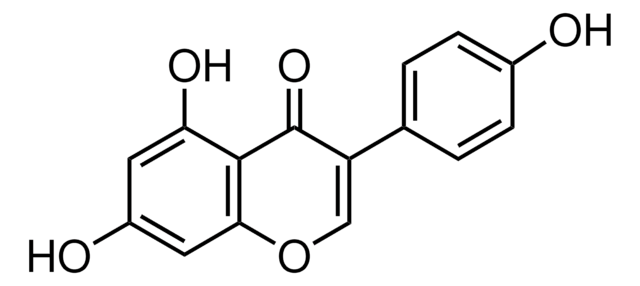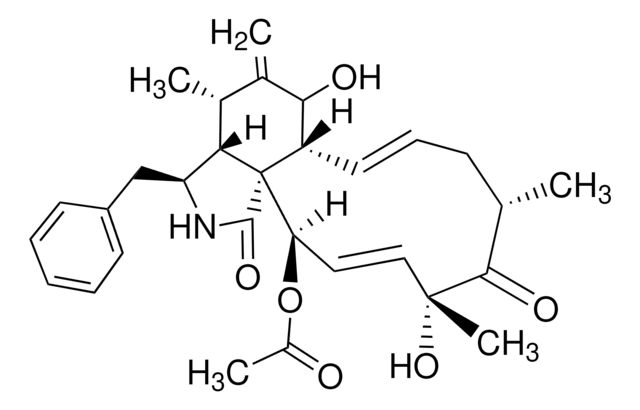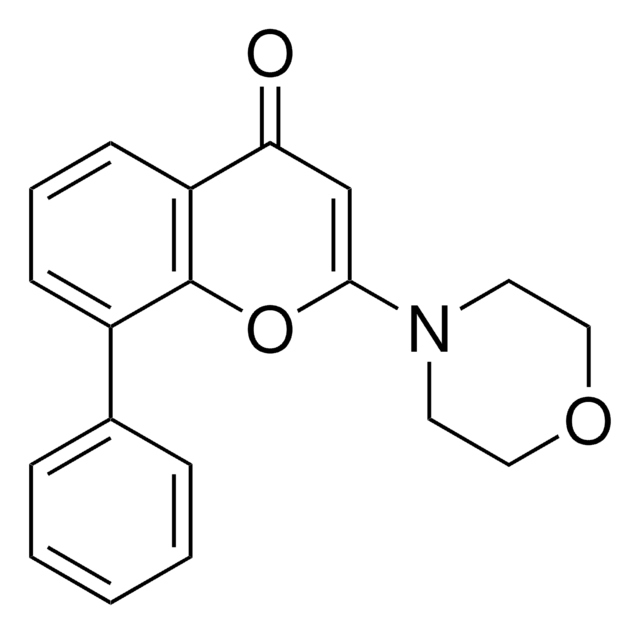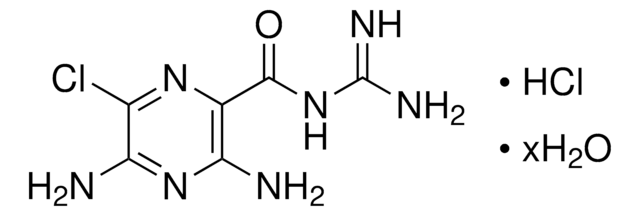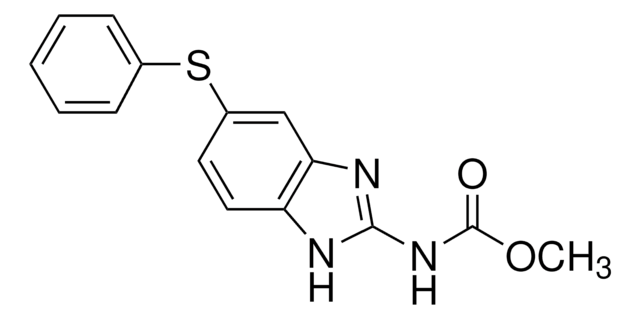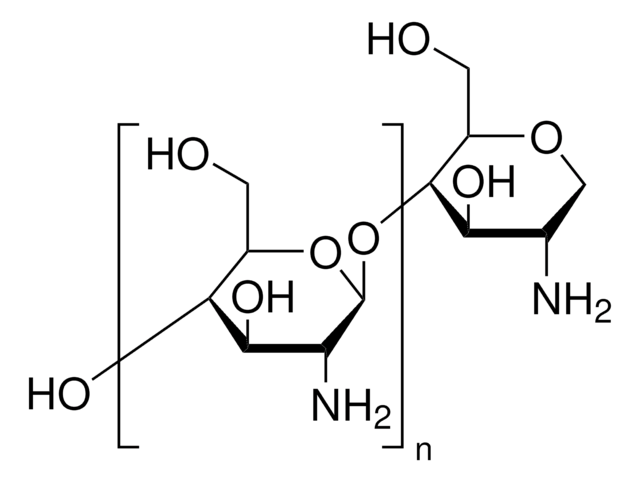推荐产品
品質等級
化驗
≥98% (HPLC)
形狀
solid
製造商/商標名
Calbiochem®
儲存條件
OK to freeze
顏色
orange
溶解度
ethanol: 1 mg/mL
DMSO: 30 mg/mL
運輸包裝
ambient
儲存溫度
2-8°C
InChI
1S/C30H28O8/c1-15-24(33)19(27(36)22(16(2)31)25(15)34)14-20-26(35)18-12-13-30(3,4)38-29(18)23(28(20)37)21(32)11-10-17-8-6-5-7-9-17/h5-13,33-37H,14H2,1-4H3/b11-10+
InChI 密鑰
DEZFNHCVIZBHBI-ZHACJKMWSA-N
一般說明
一种可渗透细胞且可逆的蛋白激酶C抑制剂,其对PKCδ(IC50 = 3-6 µM)和PKCθ具有更高的选择性。抑制PKCα、PKCβ和PKCγ亚型,但效力显著降低(IC50=30-42 µM)。对PKCε、PKCη和PKCζ的抑制活性降低(IC50=80-100 µM)。还已知抑制CaM激酶III(IC50 = 5.3 µM)。
一种蛋白激酶Cδ(PKCδ,IC50=3-6 µM)和PKCΘ同工酶的细胞渗透性可逆抑制剂。也抑制PKCα、PKCβ和PKCγ亚型,但效力显著降低(IC50=30-42 µM)。对PKCε、PKCη和PKCξ的抑制活性降低(IC50=80-100 µM)。还已知抑制CaM激酶III(IC50 = 5.3 µM)。
生化/生理作用
主要靶标
PKCδ
PKCδ
产物不与ATP竞争。
可逆性:是
细胞可渗透性:是
靶标IC50:对于PKCδ为3-6 µM;对于CaM激酶III为5.3 µM
警告
毒性:标准处理(A)
重構
复溶后,等分并冷冻保存(-20°C)。贮备溶液在-20°C下可稳定保存至多3个月。
其他說明
Villalba, M., et al. 1999.J. Immunol. 163, 5813.
Gschwendt, M., et al. 1994.Biochem.Biophys.Res. Commun.199, 93.
Gschwendt, M., et al. 1994.FEBS Lett.338, 85.
Gschwendt, M., et al. 1984.Cancer Lett.25, 177.
Gschwendt, M., et al. 1994.Biochem.Biophys.Res. Commun.199, 93.
Gschwendt, M., et al. 1994.FEBS Lett.338, 85.
Gschwendt, M., et al. 1984.Cancer Lett.25, 177.
法律資訊
CALBIOCHEM is a registered trademark of Merck KGaA, Darmstadt, Germany
儲存類別代碼
11 - Combustible Solids
水污染物質分類(WGK)
WGK 3
閃點(°F)
Not applicable
閃點(°C)
Not applicable
Helios Gallego-Gutiérrez et al.
Molecular biology of the cell, 32(15), 1347-1358 (2021-05-20)
The presence of tight junction protein zonula occludens 2 (ZO-2) at the nucleus inhibits the transcription of genes regulated by TEAD transcription factor. Here, we analyzed whether the movement of ZO-2 into the nucleus modulates the nuclear concentration of TEAD.
Yan-Wei Wu et al.
Materials today. Bio, 17, 100480-100480 (2022-11-11)
Most existing vaccines use activators that polarize the immune response to T-helper (Th) 2 response for antibody production. Our positively charged chitosan (Cs)-based nanocomplex (CNC) drives the Th1 response through unknown mechanisms. As receptors for the positively charged CNC are
我们的科学家团队拥有各种研究领域经验,包括生命科学、材料科学、化学合成、色谱、分析及许多其他领域.
联系技术服务部门



